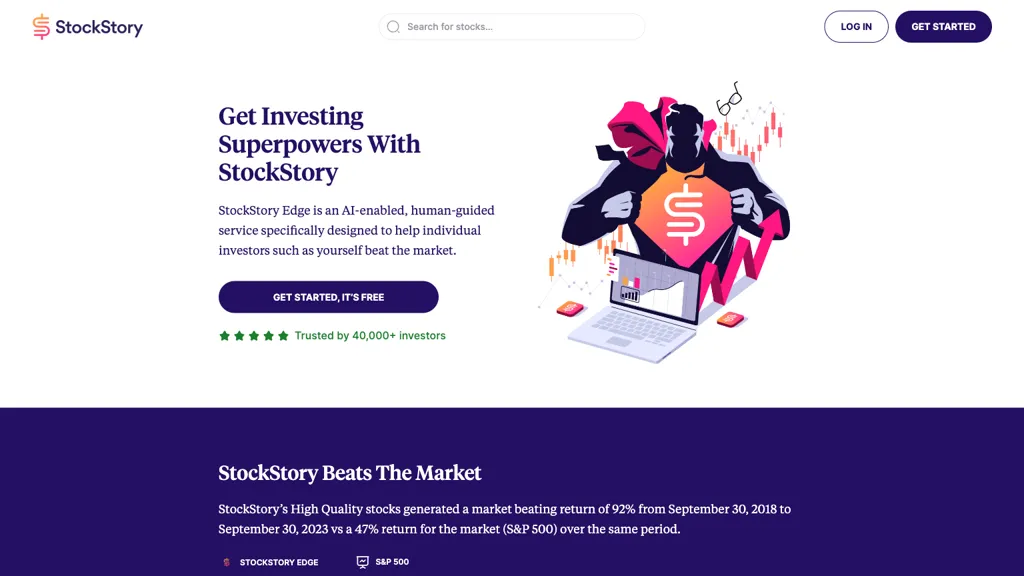20 New Info For Choosing AI Stock Predictions Analysis Sites
20 New Info For Choosing AI Stock Predictions Analysis Sites
Blog Article
Top 10 Suggestions On How To Assess The Integration Of Ai Platforms For Predicting And Analyzing Stocks And Their Compatibility
When looking at AI trading platforms compatibility and integration are important elements. An AI platform that is seamlessly integrated with existing tools, systems and workflows of your company can increase productivity and efficiency. These are the top 10 guidelines to evaluate the compatibility and integration of these platforms:
1. Check Brokerage Integration
Brokers that are supported: Make sure the platform works with the brokerage you prefer account, or trading account.
Trade execution: Check whether your platform permits the execution of trades directly with the integrated broker.
Account synchronization: Determine if the platform can sync accounts' balances, positions and transaction history in real-time.
2. Evaluation of API availability
API access: Make sure that the platform has an API available to developers who would like to automate workflows, or develop custom tools.
API documentation - Make sure that API's examples and usage examples are well-documented.
Rate limits: Check if the API has acceptable rate limits and is able to handle your anticipated usage volume.
3. Examine the Third-Party Tool Integration
Popular tools: Verify if the platform is compatible with tools like Excel or Google Sheets.
Data export/import - Ensure that the platform allows for easy data export/import from/to other tools.
Plugins/extensions Verify the platform's support for extensions as well as plugins to provide additional functionality.
4. Test Compatibility with Operating Systems
Desktop compatibility - Ensure that the platform you select is compatible with Windows, macOS and Linux.
Mobile compatibility: See if the platform offers a mobile app for iOS and Android.
Web-based Access: Make sure you can connect to the platform using a browser, which will allow you to be more flexible.
5. Assess the Data Integration Capabilities
Data sources. Check that the platform is equipped with multiple data integrations (e.g. data providers for market, social media sentiment, news feeds).
Data feeds that are real-time: Check whether the platform supports real-time data integration to provide the most current analysis.
Historical data import: Verify whether the platform allows import of historical data to analyze or backtest.
6. Examine cloud and On-Premise compatible
Cloud-based platform that is accessible anywhere with an internet connection.
On-premises Solutions: If you would prefer to deploy on-premises, make sure the platform is compatible.
Find hybrid solutions. This is a method that blends cloud and on-premises features.
7. Make sure to check for Cross Platform Syncronization
Device synchronization - Make sure that your platform is synchronized to sync settings and data across all devices (desktops and mobiles).
Verify the real-time update to see the changes made on one device will be reflected instantly to the other.
Offline access: Check if the platform allows only limited access to data or functions in offline mode.
8. Evaluate Compatibility with Trading Strategies
Automated or Algorithmic trading: Make sure that the trading platform supports these strategies.
Custom indicators. Check whether the platform allows you to use technical indicators or scripts.
Backtesting strategies: Find out if the platform supports backtesting of trading strategies using historical data.
9. Examine Security and Compliance
Data encryption: Make sure that the platform uses encryption for data at rest and in transit.
Authentication Verify whether the platform supports secure methods of authentication (e.g. Two-factor authentication).
Compliance with regulations: Check if the platform is in compliance with relevant regulations.
10. Scalability of Tests, Performance, and Efficiency
Scalability: The platform must be able to handle growing volume of data and users.
Performance under load - Check that the platform continues to perform under conditions of extreme market volatility.
Resource usage: Make sure your system makes use of system resources like memory, CPU and bandwidth.
Bonus Tips
User feedback: Research reviews and testimonials from users to assess the capabilities of the platform to integrate.
Trial period: Try an unpaid trial or demo to try the integration of the platform with your current workflows and tools.
Customer Support: Ensure the platform provides robust support to help with integration problems.
Follow these tips to assess the compatibility and integration between AI platforms for predicting and analyzing stocks as well as your existing trading systems, and ensure that they increase your trading efficiency. Check out the recommended ai investing platform hints for blog examples including ai for stock trading, stock ai, best ai for trading, ai stock picker, ai stock, ai investing platform, ai stock trading, ai for stock predictions, ai stock, best ai stock and more.
Top 10 Ways To Evaluate The Updates And Maintenance Of Ai Stock Trading Platforms
Assessing the updates and maintenance of AI-driven trading and stock prediction platforms is crucial to ensure that they remain effective, secure and in tune with the changing market conditions. Here are the top 10 suggestions to assess their update and maintenance practices:
1. Updates Frequency
Tips: Find out the frequency of updates to your platform (e.g. monthly, quarterly weekly, quarterly).
The reason: Regular updates show an active and flexible development, as well as a willingness to respond to market trends.
2. Transparency and Release Notes
Tip: Read the release notes on your platform to learn about any updates or changes.
Release notes that are transparent demonstrate the platform's dedication to continual improvement.
3. AI Model Retraining Schedule
Tips: Find out how often AI models are retrained with new data.
Reasons: Models have to change to stay accurate and relevant as markets shift.
4. Bug Fixes and Issue Resolution
Tip: Check how quickly the platform is able to fix glitches or any other technical problems.
The reason bugs are fixed as soon as possible to make sure that the platform remains reliable and functional.
5. Updates to Security
TIP: Make sure that the platform frequently updates its security protocols in order to protect user data and trading activities.
Why: Cybersecurity is critical in financial platforms to stop breaches and fraud.
6. Integration of New Features
Go through the platform to determine whether it has recently added new features based on market or user feedback (e.g. improved analytics).
What's the reason? New features demonstrate flexibility and responsiveness to user demands.
7. Backward Compatibility
Tip: Check that updating does not cause any major disruption to existing functionality or require a significant change in configuration.
Why? Backward compatibility is important to ensure smooth user interface transitions.
8. Communication With Users During Maintenance
Check out how your platform alerts users about scheduled maintenance or downtime.
Why: A clear communication can minimize interruptions and help build confidence.
9. Performance Monitoring, Optimization, and Analyses
Tips: Make sure that the platform monitors its the performance metrics (e.g., latency, accuracy) and then optimizes its system.
Why: Constant optimization ensures that the platform remains robust and flexible.
10. Compliance with Regulation Changes
Find out if the platform's policies and features have been updated to comply to the latest financial regulations or privacy laws for data.
Reasons: Regulatory compliance is crucial to reduce legal risks and preserve confidence in the user.
Bonus Tip: User Feedback Integration
Check if the platform actively integrates feedback from users into its updates and maintenance procedures. This shows a focus on the user and commitment to improvement.
When you look at these aspects by evaluating these factors, you can ensure that the AI-based stock prediction and trading platforms you choose are regularly maintained, updated, and able to adapt to market conditions that change. Have a look at the most popular inciteai.com AI stock app for site advice including ai trading tool, trading ai tool, how to use ai for copyright trading, ai in stock market, ai options, how to use ai for copyright trading, investing with ai, ai for trading stocks, stocks ai, can ai predict stock market and more.